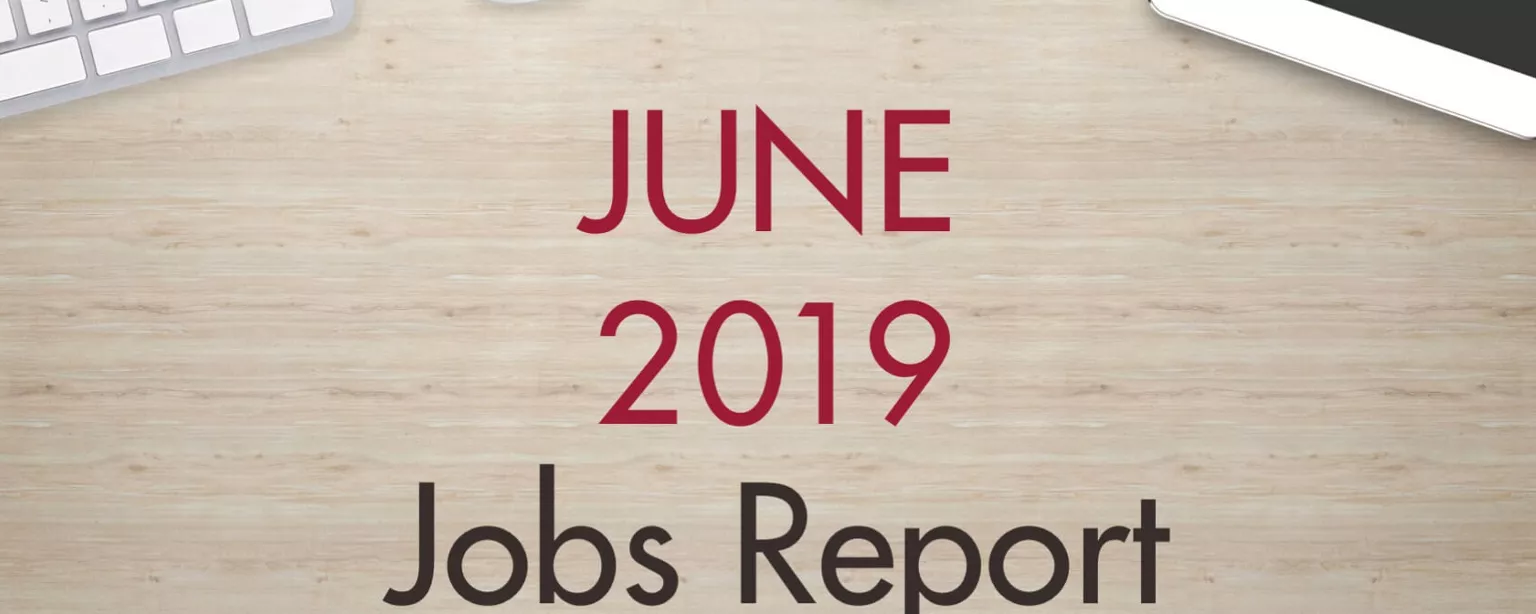In June, the U.S. economy saw solid job growth, with employers adding 224,000 positions. The gain was higher than most analysts’ predictions and followed lower-than-expected payroll expansion of 72,000 jobs in May. Since the start of 2019, employers have added more than 1 million positions, or about 172,000 per month, on average, according to the Bureau of Labor Statistics (BLS).
The following sectors created the most jobs in June:
- Education and health services: 61,000 jobs added
- Professional and business services: 51,000 jobs added
- Transportation and warehousing: 23,900 jobs added
- Construction: 21,000 jobs added
- Manufacturing: 17,000 jobs added
Unemployment rate up slightly to 3.7%
The national unemployment rate in June was 3.7% — up from 3.6% in May, which was a 50-year low. The unemployment rate for college-degreed professionals who are 25 or older — the most sought-after workers — held steady at 2.1% for the third consecutive month.
Meanwhile, unemployment rates for many roles that require specialized skills are trending well below the national average, according to the latest figures from the BLS. Some examples are accountants and auditors (1.5%), software developers (1.6%), attorneys (1.4%) and administrative managers (0.8%).
What employers need to know
Many candidates have multiple job opportunities to consider in this tight hiring market. And some job seekers will wait until they receive a solid offer of employment before deciding whether they actually want to work for a company. They might even say yes to the job — and then change their mind. In fact, a recent Robert Half survey found that more than one-quarter of workers (28%) have done exactly that. The top reason job seekers fail to commit? They received a better offer from another company.
You can’t prevent every promising candidate from changing their mind about joining your organization. But you still want to reduce the chances of that happening. These strategies can help you:
- Don’t drag your feet. If you think you’ve found an outstanding candidate, there’s a good chance that other employers are courting that person as well. So, be careful not to take too long to hire. Do the necessary due diligence, but then move as swiftly as possible to make an offer.
- Don’t skimp or lowball. In a hiring market with low unemployment, you can’t afford to hold back on offering competitive compensation and compelling perks. Present a generous hiring package that makes sense for your business but is also difficult for the candidate to refuse.
- Stay in contact. Take a high-touch approach to communication with potential hires. From the moment you first reach out to them for an interview through their first day on the job, maintain constant contact with candidates to ensure they are feeling good about the process and you’re aware of any questions, concerns or second thoughts they might have.
Continue the above approach throughout your company’s onboarding process, too. You want to help new hires succeed from Day One and help ease their anxieties. The onboarding phase is the time when you need to reassure your new employees that they made the right choice in joining your firm.







